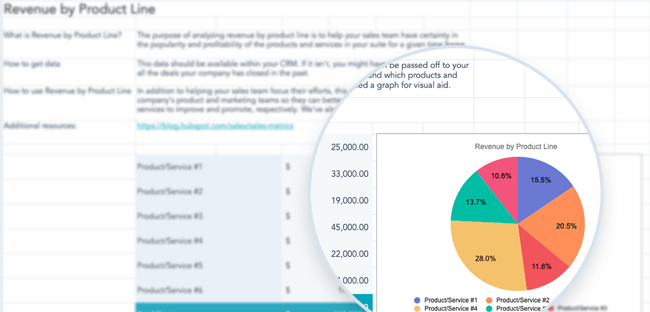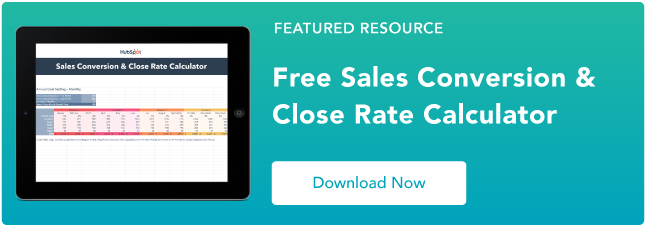The SaaS revenue model offers massive potential for businesses — with the right approach.

Given the ongoing nature of software-as-a-service (SaaS) investments and support, it’s possible for companies to turn initial sales into continual revenue streams that both boost customer satisfaction and pave the way for sustained success.
But.
This doesn’t happen overnight. SaaS selling — and SaaS revenue — are distinctly different from traditional sales and require a new approach to maximize their potential. In this piece, we’re diving into the SaaS revenue model: What it is, how it works, and how your business can make more money.
What is a Revenue Model for SaaS?
A revenue model for SaaS is the practice of first selling a SaaS solution and then supporting it over time to drive ongoing ROI.
In practice, this means connecting with prospective customers to demonstrate the benefits of your SaaS solution (or a resale SaaS offering), making the sale, and then delivering superior service and support to keep clients happy and keep revenue flowing.
SaaS as a Predominant Model for Business
The software-as-a-service model got off the ground with cloud computing adoption and is now leveraged by companies worldwide to access key software tools and solutions that help streamline business operations.
SaaS’ primary draw is the ability for companies to access key services without the need to physically install software on all on-premises devices. Instead, services are accessed via the cloud anywhere, anytime, and on any device. SaaS providers handle all updates and maintenance — businesses simply pay the monthly subscription fee for software access and use what they need, when they need it.
Software-as-a-service also comes with the benefit of on-demand scalability. If companies need more room for storage or need additional features to improve functionality, they simply contact their provider rather than purchasing an entirely new piece of software.
Additionally, SaaS makes it possible for companies to shift away from capital expenditure (CapEx) models to operating expenditure (OpEx) models. In practice, this means that rather than paying for software licensing up-front, companies pay per month for what they use, in turn allowing greater control over spending and the ability to easily add more software instances — sometimes called “seats” — as required.
Data makes it clear that SaaS is succeeding: The market is currently growing 18 percent year over year, and 99 percent of businesses now use at least one SaaS solution.
For companies that offer a SaaS solution, the nature of the market requires building and maintaining a reliable revenue stream. This starts by creating a solid SaaS bundle that customers want to buy. SaaS businesses should also make a concerted effort to establish reliable contracts, identify and convert new customers, and increase monthly revenue generation through both upselling and cross-selling.
Here’s what that looks like in practice.
Unpacking the SaaS Revenue Model
So what does the SaaS revenue model look like? Initially, it’s much like traditional sales: Teams connect with customers, identify their pain points, and close the deal on a SaaS solution.
Unlike the traditional approach, however, SaaS revenue doesn’t stop after the contract is signed and the (virtual) handshakes are done. Instead, the SaaS revenue approach comes with three distinct phases:
Initial Contracts
Initial contracts are the first phase of SaaS selling. Much like traditional sales approaches, these contracts provide a solid starting point to help get your SaaS revenue model off the ground. The caveat? They don’t bring in as much money upfront as traditional sales.
Here’s why: In a traditional sales model for a product or service, buyers might pay for the entire purchase up-front or sign long-term annual contracts that provided steady revenue over time. The fundamental feature of SaaS, however, is its flexibility — companies don’t want to be locked in for years of service. Instead, they want the option to opt-out as needed if services don’t meet their expectations. As a result, while initial contracts bring in some revenue, they’re just the starting point.
Ongoing Retention
To help stabilize revenue, ongoing customer retention is critical. This requires taking a step back from the initial sale and assessing how best to serve customers over time to increase their lifetime value.
Consider an initial sale of $1000 for the first month of service and $1000 every month thereafter. While that’s a great starting point, what happens if customers cancel service after just three months? That’s $3000 in revenue but a lost long-term opportunity.
Ongoing retention focuses on keeping customers happy over time so they stay for one year, two years, or five years — in turn generating $12,000, $24,000, or even $60,000 in revenue. This means checking in to ensure customers are satisfied with their service and making sure that SaaS solutions are regularly updated and maintained to provide optimal service. Ongoing support is also critical; customers must be able to get in touch with your brand as needed to resolve problems and solve key challenges.
Expanded Sales
Simply put, solid SaaS revenue depends on scale. Much like the software delivery model itself, scale is where SaaS revenue shines. This means looking for ways to expand current offerings that encourage additional investment from customers. For example, new storage, analysis, or security features offer upselling opportunities with current clients.
Cross-selling is also critical. If you can deliver a superior experience backed by superb customer service, your clients will talk to other businesses in their industry, in turn making it possible to leverage word of mouth into additional revenue opportunities.
How to Forecast SaaS Revenue
While it’s impossible to predict the future, it is possible to generally forecast your SaaS revenue.
Here, two components are critical: Contract values and monthly recurring revenue (MRR).
Contract values refer to the revenue value of any contracts signed with customers for a specific period. For example, if you have a contract with a company for 12 months during which they pay you a total of $12,000, this is the annual contract value. Adding up all your current contract values provides a baseline for short-term revenue.
MRR, meanwhile, speaks to the monthly revenue earned from active SaaS subscriptions. These subscriptions may not be under contract, meaning they come with greater variability but are nonetheless a critical component of revenue forecasting.
To forecast your revenue with MRR, first add up your current subscriptions. In practice, this means that if you have 10 subscriptions valued at $500 per month, your existing MRR is $5,000. Next, you need to assess the potential for new revenue as part of your forecast.
This starts with new MRR — new subscriptions acquired in the last few months. By creating a baseline for new subscription data, you can better assess your potential for ongoing revenue. Next is expansion MRR: This refers to additional revenue earned from your existing MRR base by upselling them to higher product tiers or cross-selling them to new products within your SaaS stack. Finally, you need to account for contraction MRR, which is the loss of revenue due to service downgrades or the loss of subscription customers.
Combining both contract and MRR values, companies can both pinpoint current revenue values and create a reliable revenue forecast that informs marketing, sales, and customer service efforts.
SaaS Revenue Model Template
Looking for a SaaS revenue model template to help you get started? HubSpot has you covered.
Together with QuotaPath, we created a Free Sales Metric Calculator — an easy-to-use Excel template that lets you calculate average deal sizes, win-loss rates, churn rates, CAC-to-CLV, customer retention rate, and more.
SaaS Revenue Model Tips
Revenue strategy is one thing, but how do providers effectively sell SaaS solutions to prospective clients? Start with these strategic selling tips.
1. Create trial periods.
Try-before-you-buy options can help potential customers find the best fit for your SaaS solution without the need for any monetary commitment.
The length of a trial period that works for your product often depends on its complexity. If your offering is simple and straightforward, a 7-day trial is enough for companies to get a sense of what your product does. Multi-tiered or more complex products may benefit from a 14-day trial, while a 30-day trial is a good approach for in-depth enterprise offerings.
2. Stay in contact.
Next up? Make sure you stay in contact with prospective buyers both during their trial periods and after they make a purchase. Find out what’s working, what isn’t, and what you can do to help. Keeping in touch can also help you customize offerings to meet their unique needs.
3. Provide simple demos.
Simple on-site demos of your product provide customers with a quick overview of what your solution does and if it’s a good fit for their business. Plus, it requires nothing but a few minutes of time from your prospective buyers, making demos a great introductory approach to your product.
4. Consider annual options.
While SaaS products are often sold on a month-to-month basis, you can also offer annual prepaid subscriptions that come with a discount but offer the benefit of revenue up-front. These plans are often preferred by companies who want to find their best-fit solution but don’t want to worry about managing it every month.
5. Ask for feedback.
Always ask for feedback. Ask for it after companies view demos, when they start and end free trials, and during their subscription period. Not only does this feedback help tailor your solution to their specific needs, but it also lets your team identify and remediate recurring problems that are consistently mentioned by customers.
6. Keep track of the details.
Finally, leverage a robust CRM solution to keep track of all the details. This includes client numbers, subscription types, and renewal dates. Comprehensive CRM tools also make it possible to streamline support and ensure that customers are getting the help they need, when they need it.
Key SaaS Revenue Model Metrics
Even armed with a solid selling approach and the right revenue model in place, SaaS companies can’t rest on their laurels. To ensure sales are on track for sustained success and continued growth, businesses must monitor key SaaS metrics. Some of the most relevant include:
Customer Churn
How many customers are staying after their trial period? How many leave after three months? Six? A year? Understanding how many customers you’re losing — and why they’re leaving — can help minimize customer churn and increase sustainable revenue.
Customer Lifetime Value (CLV)
CLV is a measure of how much an average customer is worth to your company over time. This number helps inform your marketing and sales strategy. For example, if your CLV is low because you’re focused on entry-level products with a minimal bar to entry, then finding and converting new customers is key to success.
If your CLV is high, meanwhile, it’s more important to retain the customers you have rather than spending time and money searching for new prospects.
Customer Acquisition Cost (CAC)
CAC is the amount it costs to acquire a new customer. For example, if you’re spending $100,000 per month on marketing, sales, and other functions to acquire 100 customers, your CAC is $1,000.
If each of these customers pays $100 per month for your product over a year, you make $120,000 against $100,000 in spending. As a result, it’s critical to regularly monitor this metric and compare it against current revenue streams to ensure the amount spent on acquisition doesn’t exceed the amount generated by SaaS contracts.
Customer Engagement Score
Customer engagement score is a measure of how engaged customers are with your company and your product. Common factors include product and service engagement, marketing engagement, community engagement, and advocacy engagement.
While scoring scales and weighs will differ for each company — for example, if you’re focused on expanding current sales, community and advocacy engagement may be your priorities, while service engagement may be most important if you’re looking to boost retention — a solid customer engagement framework can help quantify key trends and inform strategic decision-making.
Making the Most of Your SaaS Revenue Model
SaaS is taking the market by storm. As a result, there’s massive revenue potential in this market — if companies take the right approach. A successful SaaS revenue model recognizes the shift in sales from one- to three-phase models, implements solid sales tactics, and offers ongoing success by tracking key SaaS metrics over time.
![Download Now: Sales Conversion Rate Calculator [Free Template]](https://no-cache.hubspot.com/cta/default/53/059a7eef-8ad9-4bee-9c08-4dae23549a29.png)

